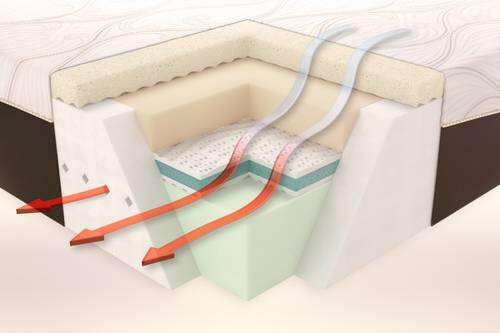This post is sponsored by ComforPedic iQ. As a promotional post, it reflects the views of the sponsor, not ReadWrite’s editors.
How did you sleep last night? If you tossed and turned like a bag of rocks in a clothes dryer on permanent press, perhaps it’s time to listen to your body and consider a new mattress.
Unfortunately, most people use their gut instinct when choosing a new bed. Here’s a typical scenario for those in the market for a new mattress: You’ll spend several days visiting various mattress retailers in your area. You’ll look around, bounce a few times on the ones that looked firm, lay down on an even fewer number of mattresses that looked expensive and maybe roll from side to side on one or two. You’ll likely end up more confused than ever on which one will actually help you rest.
Most of us grew up on mattresses based on steel frames and coils. Experts historically recommended a firmer mattress for better sleep. However, contemporary mattresses are challenging old notions.
There’s been no shortage of new-style mattresses on the market promising to keep your posture aligned, your body at a comfortable temperature, and your sleeping partner happy. There are dozens of different covers made of memory foam, varying amounts of fillers, and endless ways to isolate each sleeper from the other.
If only science could determine the correct type of mattress for each person. Perhaps it has: A new type of mattress, the ComforPedic iQ, incorporates several of these new manufacturing methods complete with eight separate chambers that adapt to the body without the use of motors, buttons, plugs, or electronics.
Measuring A Mattress’s Success
The makers of the ComforPedic iQ commissioned a study from the Sleep Disorders Center at Temple University Hospital to assess how a more modern mattress might fare against a classic steel-frame-and-coil mattress.
Twenty healthy individuals from the general population with an average age of 39 were given two test mattresses for use in an at-home study. Temple researchers first measured the participants’ sleep quality on their regular mattresses for a week before comparing it to sleeping on ComforPedic iQ mattresses for a second week.
The volunteers’ sleep quality was quantitatively assessed using electroencephalography to record sleep, according to Samuel Krachman, director of the Sleep Disorders Center at Temple University Hospital. On average, study participants fell asleep faster, spent less time lying awake at night, and experienced more rapid-eye-movement (REM) sleep when using the test mattresses.
“These findings suggest that using a mattress with newer technologies … may improve a person’s sleep quality,” said Dr. Krachman. “Environmental factors can also impact sleep quality, such as light intensity, room temperature, or noise level in the bedroom.”
Diamond Dust And Gel Beads
It may not be a smartphone, but a ComforPedic iQ mattress does use some pretty smart technology in its construction.

The core of the bed is made up of eight separate horizontal chambers that line up from head to toe. For a queen or king-size mattress, there are two rows of these chambers. The air in these chambers also circulates as you move. This design aims to isolate support to parts of the body that are heavier such as the hips and shoulders. The mattress also uses an antifungal, antimicrobial treatment to prevent musty smell.
The polyurethane foam itself is comprised of dust from real diamonds and microgel beads, which the company says helps move heat rapidly away from the body. The foam is designed so you and your partner sleep coolly and comfortably throughout the night, without that “quicksand” feeling found in other foam mattresses.
With as much science being poured into improving sleep, one can only imagine how our mattresses will advance in the future. It’s something to dream about.
Photos by ComforPedic iQ


















